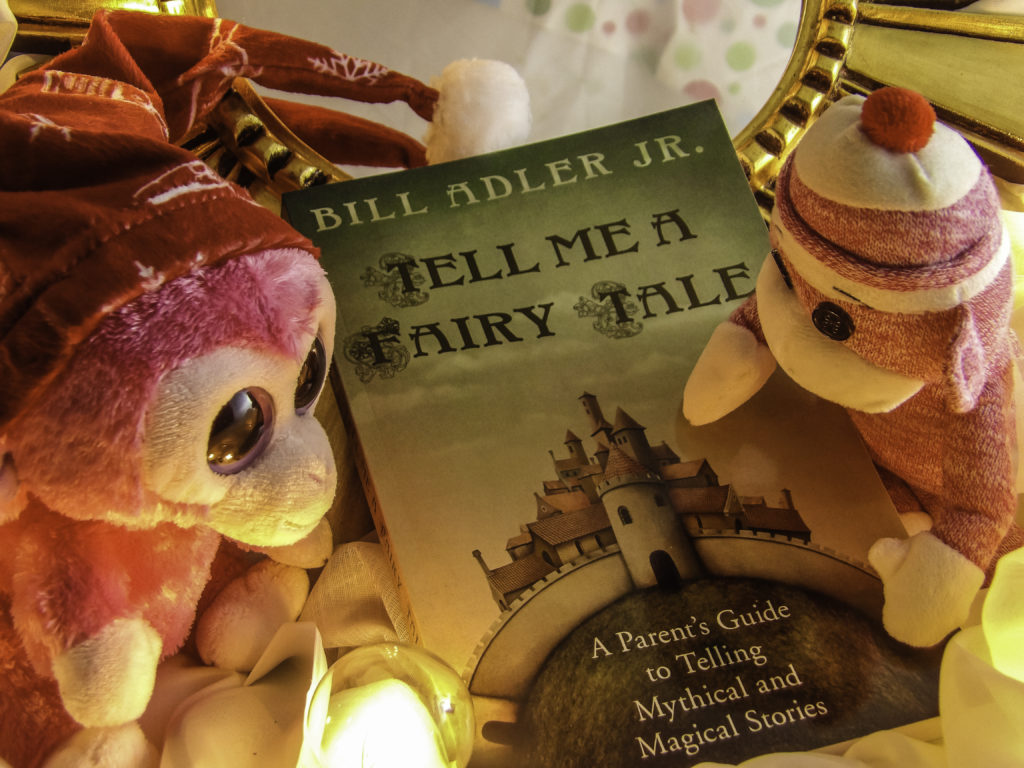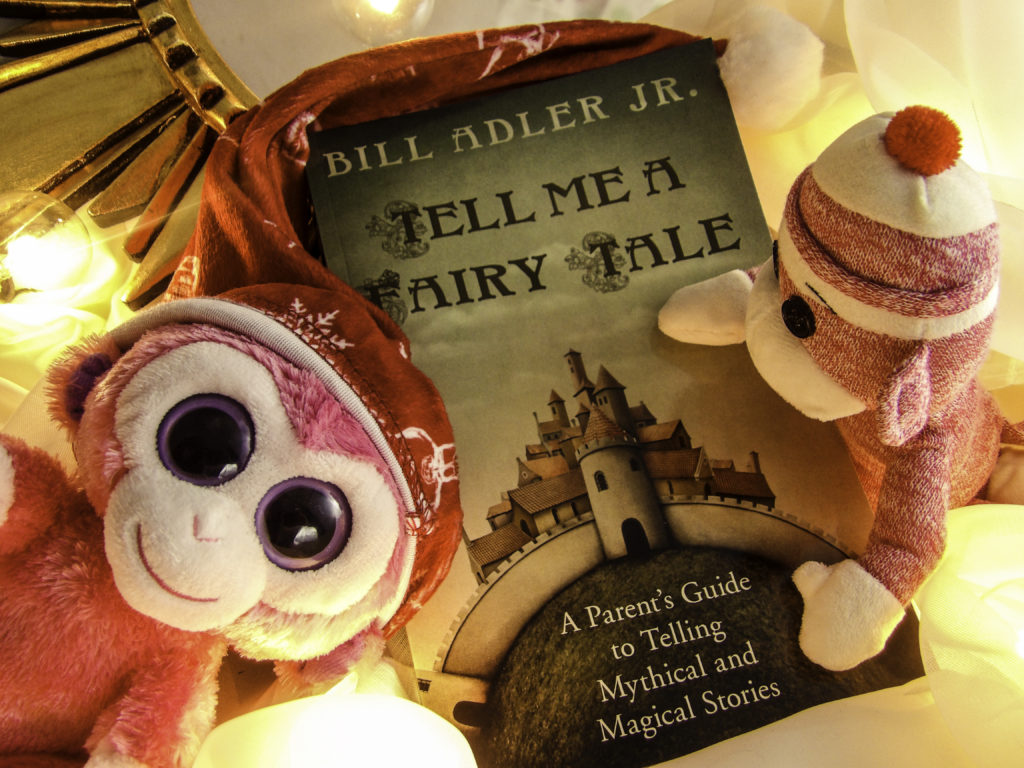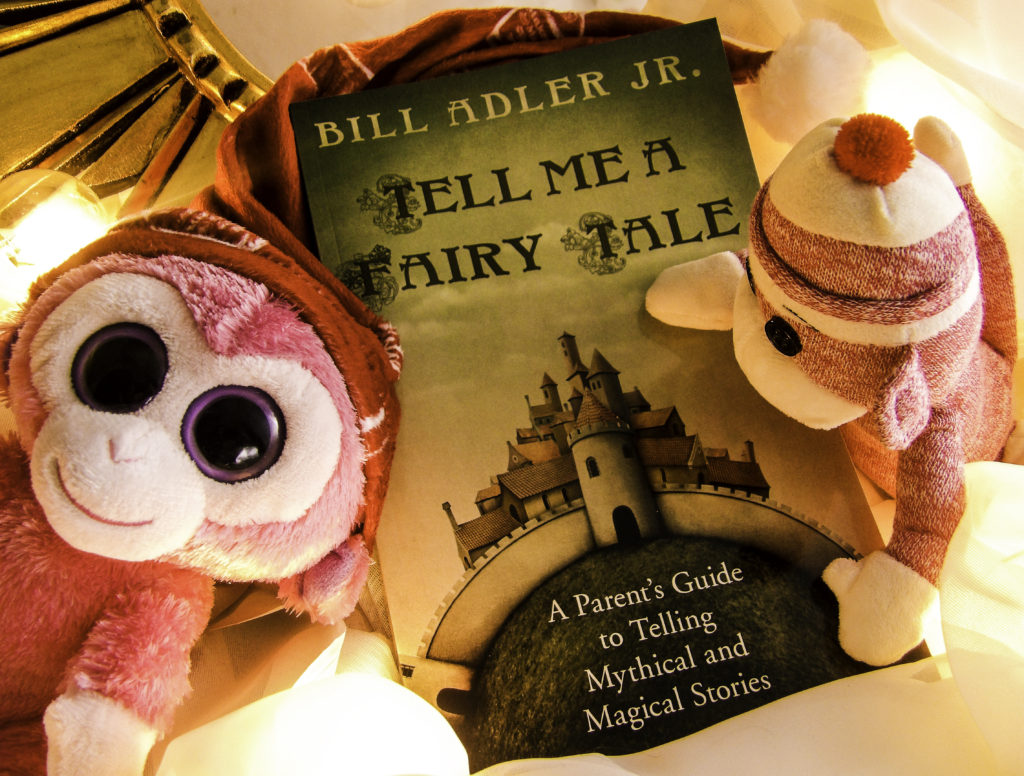Storytime holds a special place in our hearts. Memories of a grandparent or parent telling us a tale bring a smile to our face. Being a good storyteller is an art.
For our Read an eBook series, today we feature Tell Me a Fairy Tale: A Parent’s Guide to Telling Magical and Mythical Stories, which is like Clif’s Notes for over 60 classic & little-known Fairy Tales including alternate endings & easy ways to enhance your storytelling game now that you’re the grown up.
WHY YOU NEED THIS BOOK
Tell Me a Fairy Tale: A Parent’s Guide to Telling Magical and Mythical Stories offers concise synopses of both classic standards and lesser known but beloved African-American, Asian, Native American, and European fairy tales. Tell Me a Fairy Tale is not just a collection of stories, but a guide to telling stories in a kid-appealing way, a how-to for revising scary parts, and how to modernize while retaining the tale’s essence. What details enthrall kids and what bores them? It’s all covered.

Is it time for a bedtime story? Tell Me a Fairy Tale comes to the rescue!
TELLING THE TALE
Instead of relying on the same old stories, this book has helpful coverage of over sixty fairy tales of interest to both boys and girls. While some tales have a moral to the story, some just amuse children like Paul Bunyan being so BIG that he ate 400 pancakes a day and dug the Mississippi River!
HOW TO USE TELL ME A FAIRY TALE
The Table of Contents lists the Fairy Tales in alphabetical order. Each Fairy Tale provides:
- Summary: a brief thumbnail overview of the story
- The Characters: the name and brief description of the main characters and how they relate to each other
- The Plot: The full story summary
- How to Tell This Story: Notes on any underlying moral to the story. If there is no moral to the story, a possible lesson that could be interjected is suggested. Areas of the story that would benefit from extended descriptions or visually imagery are noted to enhance the story for a young, vivid imagination.
FAIRY TALES NEED SOME MODERN-DAY TWEAKING: HOW TELL ME A FAIRY TALE CAN HELP
Fairy Tales morphed over time, often into versions that make little sense today. The moral or lesson may be unclear, and some fairy tales are downright scary in their original form. Not that every story must instill a life-lesson, but they should, at a minimum:
- Not confuse a child. I’m looking at you, Goldilocks, you hapless, insufferable imp. How were there no consequences to this unsupervised spelunking? Breaking and Entering, Destruction of Property and porridge-theft misdemeanors are crimes. Goldilocks as we know it is nothing like its’ original yet antiquated self that along the way lost its’ lesson and conclusion. Tell Me a Fairy Tale has some suggestions to remedy this classic into a story with a legit ending and useful life lesson.
- Not condone dangerous actions: (i.e. No good comes from taking apples from strangers). As we no longer live in a world where a child should ever think of taking food from strangers, the book includes alternative tellings that fit the story context within potentially problematic tales.
- Not scare your child so much that they can’t sleep afterward. Some stories are too scary for bedtime or young children. This book has stories for even very young kids.

Over sixty Fairy Tales from around the globe
WOMEN IN FAIRYTALES
How do you want to characterize women in the stories you tell children?
Full disclosure: any female with a beauty & fashion blog, such as ourselves, wishes they had their very own fairy godmother to upgrade our “Outfit of the Day” to “princess level” with the wave of a magic wand. A girl can use a little Cinderella in their life.
There are precious few positive role models for women in fairy tales. A fairy tale female is often a beautiful, passive victim awaiting rescue or a lazy, cruel step-sister or, of course, the aging, jealous, heartless evil stepmother who’s the source of all the trouble. Gretel of “Hansel and Gretel” is one of the few fairy tale females with her wits about her.
In this collection, there are some “…and they lived happily ever after” kind of stories. But there aren’t any of the impossible to respect “The Little Mermaid” type characters that forsake their Beyonce quality singing voice, disobey, lie and desert a loving family for the pursuit of a cute boy. That’s something else I like about Tell Me a Fairy Tale: a wide variety of protagonist types to break out of the constant damsel in distress story dynamic, making for a more rounded balance of characters, themes, mysterious lands, cultures and foreign places within your storytelling arsenal.
Not every bedtime story requires spinning a tale with a feminist-themed life lesson akin to “Madame Curie and the TWO Nobel Prizes.” Some stories are simply entertaining and amusing. The book offers suggested a modification of tales that ONLY have stereotypical fairytale depictions of women, which is something many parents consider doing when telling bedtimes stories to their children: girls AND boys.
One approach suggested in Tell Me A Fairy Tale is that the villain can be adapted to suit the circumstances of your family. Particularly in blended families, this step-mother as antagonist concept may need revision. Does the villain always have to be a vapid woman over the age of thirty-five driven by jealousy, vanity, revenge or self-interest? How about sometimes making the villain a supervisor, an evil nanny, a monster, an uncle, a troll, or a robot?
FAIRY TALES ARE SCARY
Grimm Fairy Tales are grim indeed, initially closer to horror stories than soothing bedtime tales. Tell Me A Fairy Tale provides alternate scenarios to some of the scary parts and suggests some modern-day improvements. For example, instead of Hansel and Gretel killing the witch, the book suggests that Gretel tricked the witch, locked her in a closet, escaped and alerted the police and Gretel got a medal. Modernized options are offered for stories such as “Sleeping Beauty” and “The Red Shoes” Sad tales dealing with death, such as The Little Match Girl are included as sometimes a sad story is appropriate, although possible variations are suggested.
CONCLUSION
Tell Me a Fairy Tale is a great gift for a new parent, Grandparent, Aunt or Uncle so they can learn the art of telling stories. It may also be of interest to those who work with children such as teachers, librarians, and child care services. The collection of Fairy Tales is a nicely curated blend of main characters and cultures, some with a life lesson; others are just amusing tales. There were several tales I didn’t know and many I’d forgotten. It is a fun read for an adult!
The author, a father of two girls, understands the powerful impact a story can have on a young mind. The book offers empowerment for a daughter or niece not by compiling only stories of heavy-handed feminist heroines, but from giving many non-stereotypical options for positive role models that aren’t based solely upon gender constructs.

Ready for story time?
ABOUT THE AUTHOR
Author Bill Adler, Jr, also known as Father to Karen and Claire, finished this book just before his second child was born. Already a polished storyteller, as Bill (@billadler) has authored several other books including Outwitting Squirrels (The Wall Street Journal: A masterpiece Boing Boing: One of the funniest books I’ve ever read) Boys and Their Toys: Understanding Men by Understanding Their Relations With Gadgets, and How to Negotiate Like a Child.
Bill is a Claren Books Publisher, a second-generation book company.
TELL ME A FAIRY TALE
Find the Style Chicks recommended Tell Me a Fairy Tale on Amazon in Kindle and Paperback
ABOUT THE PUBLISHER: CLAREN BOOKS
Are you an aspiring writer or avid reader? Read more about how StyleChicks loves the way Claren Books supports the creativity of authors.
Find out more about Claren Books and the online creative community they have cultivated for authors at:
Twitter: @clarenbooks
Facebook: facebook.com/clarenbooks
Website: http://www.clarenbooks.com
Style Chicks received a copy of this book in exchange for our unbiased review. However, our experience with the product and the opinions expressed in this review are 100% ours.